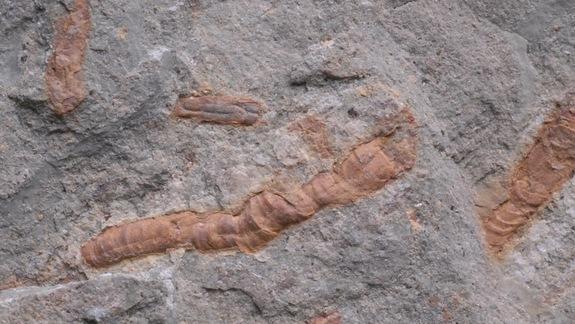There was far more than one, study suggests
The Paleolithic diet, or caveman diet, a weight-loss craze in which
people emulate the diet of plants and animals eaten by early humans
during the Stone Age, gives modern calorie-counters great freedom
because those ancestral diets likely differed substantially over time
and space, according to researchers at Georgia State University and Kent
State University. Their findings are published in The Quarterly Review
of Biology.
Stone Age people ate whatever edible things they could
get their hands on
“Based on evidence that’s been gathered over many decades, there’s very
little evidence that any early hominids had very specialized diets or
there were specific food categories that seemed particularly important,
with only a few possible exceptions,” said Dr. Ken Sayers, a
postdoctoral researcher at the Language Research Center of Georgia
State. “Some earlier workers had suggested that the diets of bears and
pigs—which have an omnivorous, eclectic feeding strategy that varies
greatly based on local conditions—share much in common with those of our
early ancestors. The data tend to support this view.”
The co-author on the paper, Dr. C. Owen Lovejoy, is a Distinguished
Professor of Anthropology at Kent State University, well known for his
reconstructions of the socioecology and locomotor behavior of early
hominids such as “Ardi” (Ardipithecus ramidus, 4.4 million years old)
and “Lucy” (Australopithecus afarensis, 3.2 million years old).
The study examines anatomical, paleoenvironmental and chemical evidence,
as well as the feeding behavior of living animals. While early hominids
were not great hunters, and their dentition was not great for
exploiting many specific categories of plant food, they were most likely
dietary “jacks-of-all-trades.”
The review paper covers earliest hominid evolution, from about 6 to 1.6
million years ago. This touches on the beginning of the Paleolithic era,
which spans from 2.6 million to roughly 10,000 years ago, but Sayers
suggests that the conclusions hold in force for later human evolution as
well.
The researchers offer several points that need to be considered by
people wishing to emulate the diets of our ancestors:
1. It’s very difficult to characterize the Paleo diet. Advocates suggest
certain types of foods and a percentage of energy that should come from
protein, fats and carbohydrates. These recommendations are based
largely on estimations from a limited number of modern human
hunter-gatherers, but the diet of early humans was almost certainly much
broader.
“I think that you would certainly have lots of variation way beyond what
those recommendations are,” Sayers said. “When you’re trying to
reconstruct the diet of human ancestors, you want to look at a number of
things, including the habitats they lived in, the potential foods that
were available, how valuable those various food items would have been in
relation to their energy content and how long it takes to handle a food
item.”
There’s more to dietary reconstruction than looking at teeth from a
chemical perspective or under a microscope. It involves characterizing
the environment and taking into consideration factors as disparate as
locomotion, digestion and cognitive abilities, Sayers said.
3. Even the “same food” isn’t the same today as it was in the olden
days. For example, in an earlier study, Sayers investigated the diet of
langur monkeys living high in the Nepal Himalaya. At one point in the
year, there were wild strawberries on the ground, which seemed to be an
attractive food choice. However, the monkeys wouldn’t eat them. Sayers
tasted the wild strawberries and found they were incredibly bitter.
“The strawberries that we’re eating in the market have been selected for
certain properties, such as being large and sweet,” Sayers said. “The
foods that we’re eating today, even in the case of fruits and
vegetables, have been selected for desirable properties and would differ
from what our ancestors were eating.”
“Individuals throughout the vast majority of the Stone Age were not
living that long. Life expectancies are so high today, at least in many
regions of the globe,” Sayers said. “A lot of the diseases that do come
about today or have been linked with high-fat diets or things like that
have been referred to by some researchers as ‘diseases of affluence.’
They’re diseases that come about simply because we’re living long enough
that they can show their effects.”
In recent years, controlled studies have compared the Paleo diet with
alternative approaches, and with respect to particular health issues,
nutritionists are largely taking a “wait-and-see” attitude towards them.
5. Our ancestors were focused on survival, not necessarily eating a
balanced diet. “Throughout the vast majority of our evolutionary
history, balancing the diet was not a big issue,” Sayers said. “They
were simply acquiring enough calories to survive and reproduce. Everyone
would agree that ancestral diets didn’t include Twinkies, but I’m sure
our ancestors would have eaten them if they grew on trees.”





























